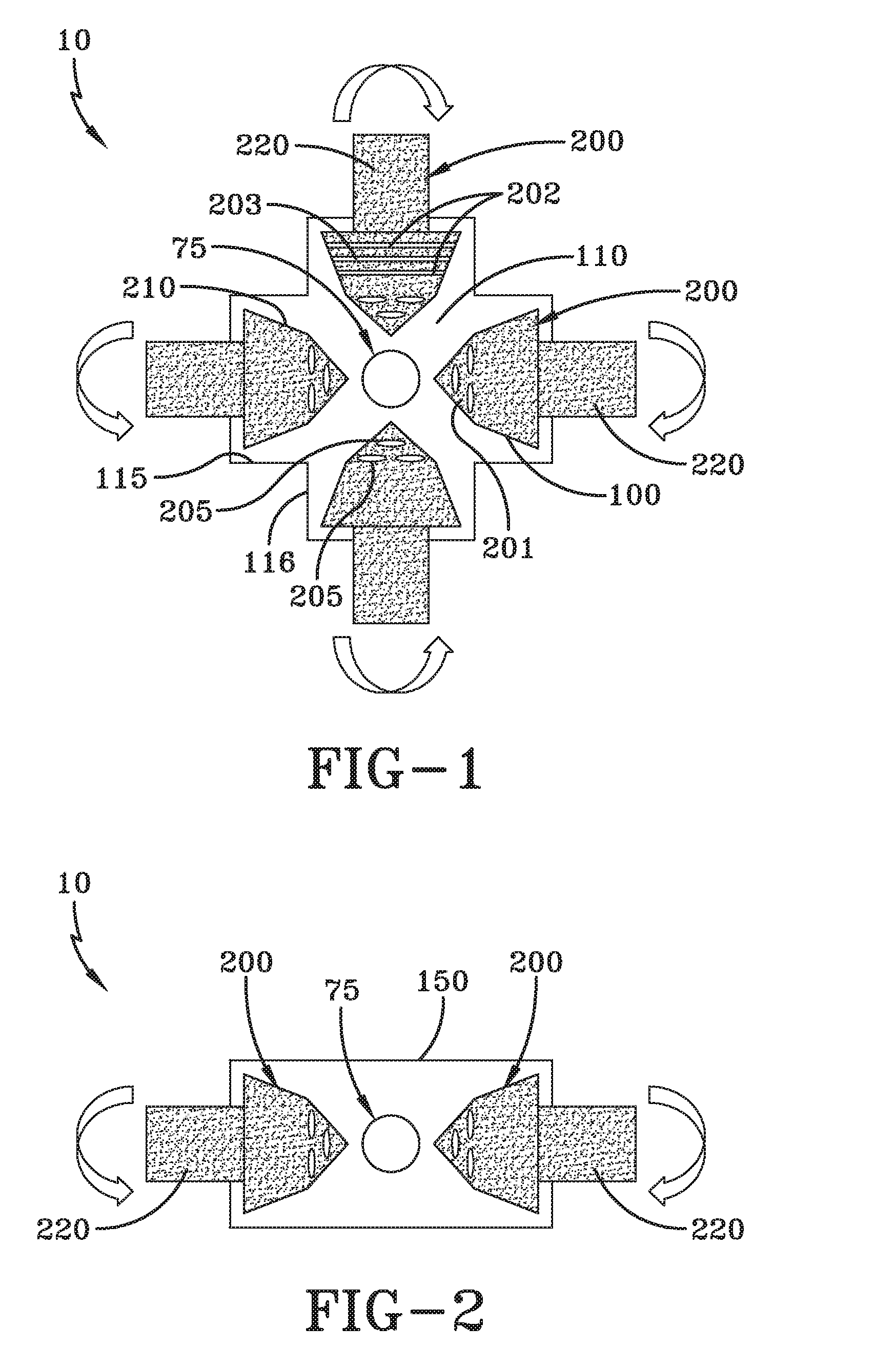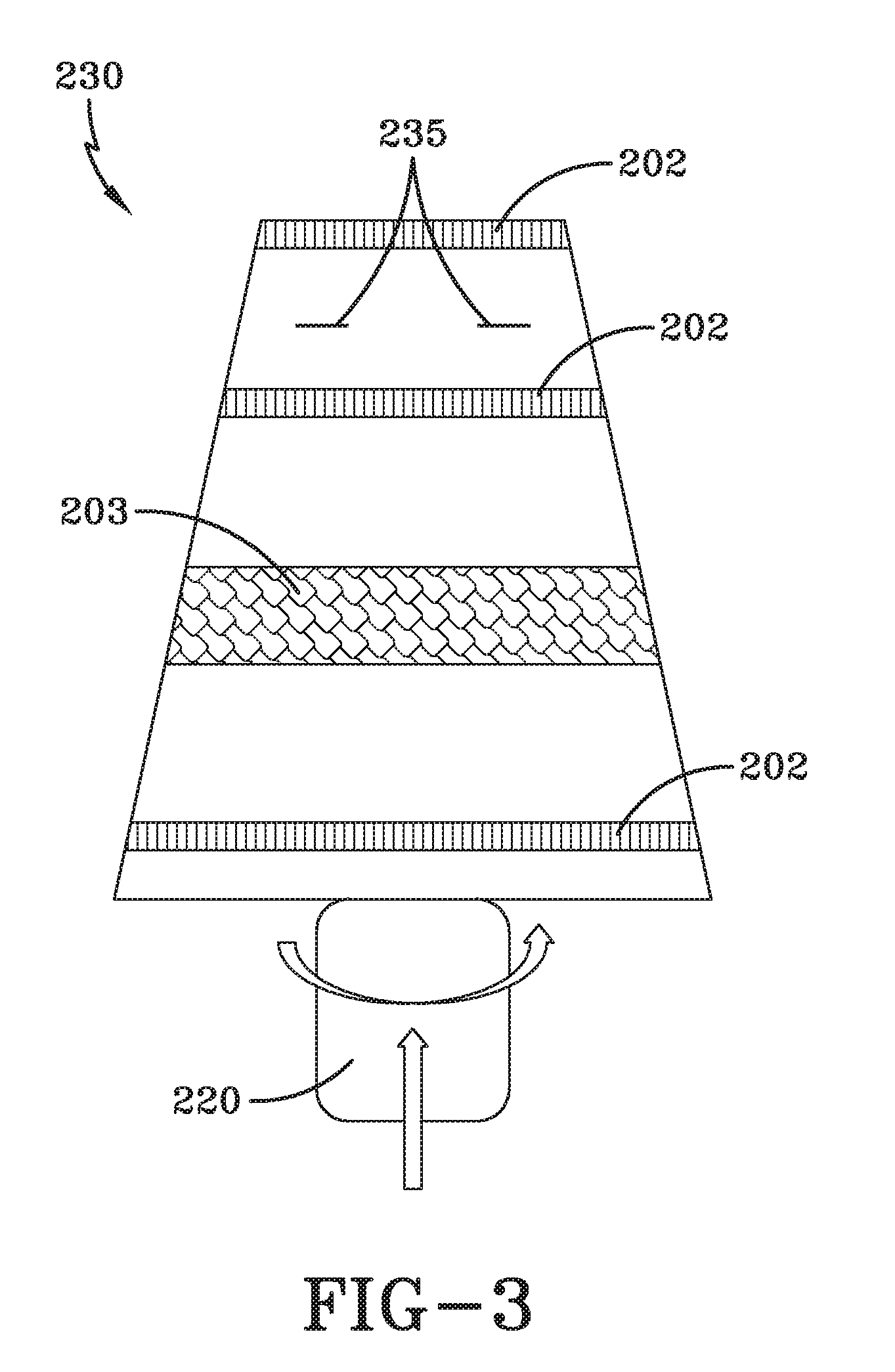
ようこそ、みなさん。
はじめに
本日も「UFOシリーズ」の続きになります。
kazzhirock.hatenablog.jpkazzhirock.hatenablog.jp
先を急ぎたいので、早速。
海軍の 「UFO特許」を生み出した科学者が、今度は「小型核融合炉の特許」を申請
Scientist Behind The Navy's "UFO Patents" Has Now Filed One For A Compact Fusion Reactor
The latest in a series of bizarre Navy patents isn't just for a revolutionary reactor that could power cities, but also potentially a craft.
海軍の一連の奇想天外な特許の最新のものは、都市に電力を供給できる革命的な原子炉だけでなく、将来的には宇宙船にもなる可能性がある。
ブレット・ティングレーとタイラー・ロゴウェイ:2019年10月9日
The War Zone has been reporting on a set of bizarre patents assigned to the U.S. Navy that describe radical new technologies that could absolutely revolutionize the aerospace field, and frankly, the very way we live our lives. These include high-energy electromagnetic fields used to create force fields and outlandish new methods of aerospace propulsion and vehicle design that basically read as UFO-like technology. You can learn all about these patents, their viability, and the issues surrounding them in these exclusive features of ours. Now, the same mysterious Naval Air Warfare Center Aircraft Division engineer behind those patents has produced another patent—one for a compact fusion reactor that could pump out absolutely incredible amounts of power in a small space—maybe even in a craft.
www.thedrive.comwww.thedrive.com
The War Zoneでは、米海軍に譲渡された一連の奇妙な特許について報じてきた。これらの特許には、航空宇宙分野、さらには私たちの生活そのものに革命をもたらす可能性のある、過激な新技術が記載されている。これらの特許には、力場を作り出すための高エネルギー電磁場や、航空宇宙の推進力と車両設計のための突飛な新手法が含まれており、基本的にはUFOのような技術と読める。これらの特許とその有効性、そしてそれらを取り巻く問題点については、この特集ですべて知ることができます。さて、これらの特許を取得した謎の海軍航空戦センター航空機部門の技術者が、別の特許を取得しました。それは、小型の核融合炉に関するもので、小さな空間でとても信じられないほどの電力を取り出すことができるとされます。
Energy dominance has become a cornerstone of American military policy as laboratories seek to develop the ‘Holy Grail’ of power generation: nuclear fusion. These attempts at developing stable fusion reactors utilize incredibly powerful magnetic fields in order to contain the nuclear reactions occurring inside. Creating a stable fusion reaction is difficult enough, but some laboratories are going even further by attempting to create compact reactors small enough to fit inside shipping containers or even possibly vehicles.
エネルギーの支配はアメリカの軍事政策の要となっており、各研究機関は発電の「聖杯」である核融合の開発を目指している。安定した核融合炉を開発するために、非常に強力な磁場を使って内部で起こる核反応を封じ込めようとしている。安定した核融合反応を起こすことは難しいが、さらに進んで、輸送用コンテナや自動車にも搭載できるような小型の原子炉を作ろうとする研究室もある。
The form of nuclear power generation employed in nuclear reactors today is fission, in which unstable isotopes of uranium and other radioactive materials are bombarded with particles, splitting them apart and releasing energy. Fusion, on the other hand, involves uniting atoms of hydrogen isotopes like Tritium and Deuterium under extreme pressure and temperature to produce helium isotopes and neutrons, a process that releases large amounts of energy.
今日の原子炉で採用されている原子力発電の形態は核分裂であり、ウランやその他の放射性物質の不安定な同位体に粒子が衝突し、それらが分裂してエネルギーを放出します。 一方、核融合では、トリチウムや重水素などの水素同位体の原子を極度の圧力と温度で結合させて、ヘリウム同位体と中性子を生成します。これは、大量のエネルギーを放出するプロセスです。
If it can be achieved, nuclear fusion would be a massive improvement over fission in that it produces much lower levels of radioactive waste and greenhouse gases, does not require enriched nuclear material that could be used to produce weapons, has a far lower risk of meltdown, and can be powered by more sustainable fuel sources. Fusion has long been hailed as a long-term solution to humankind's energy needs.
核融合が実現すれば、放射性廃棄物や温室効果ガスの発生量が格段に少なくなり、兵器用の濃縮核物質を必要とせず、メルトダウンの危険性がはるかに低く、より持続可能な燃料を使用できるという点で、核分裂に比べて大幅に改善される。核融合は、人類のエネルギー需要に対する長期的な解決策として期待されています。
While nuclear physicists and engineers have been conducting experiments with fusion reactor designs for decades, it remains challenging, to say the least, to engineer systems that can contain temperatures of hundreds of millions of degrees Fahrenheit and extremely high pressures. Most of the world’s 'successful' fusion reactors are currently only able to maintain plasma discharges for periods of time measured in minutes or even seconds.
核物理学者やエンジニアは、何十年にもわたって核融合炉の設計実験を行ってきましたが、華氏数億度の温度と非常に高い圧力を維持できるシステムを設計することは、控えめに言っても依然として困難です。現在、世界で成功している核融合炉のほとんどは、プラズマ放電を維持できるのは数分から数秒程度にすぎない。
Even more challenging is designing nuclear fusion reactors that are mobile, such as ones that might fit inside a shipping container or a ship. Currently, most of the world’s experimental fusion reactors are the size of large buildings and the ultimate goal of much current research is to develop compact fusion reactor systems, or CFRs, small enough to work on a ship or possibly even an aircraft.
さらに困難なのは、輸送用コンテナや船の中に収まるような、移動可能な核融合炉の設計です。現在、世界の実験用核融合炉のほとんどは大きな建物サイズであり、現在の多くの研究の最終的な目標は、船や場合によっては航空機で使用できるほど小型の核融合炉システム(CFR)を開発することです。
In spite of these hurdles, think tanks, such as the American Security Project, believe that fusion reactors in the 21st Century will provide low cost, carbon-free energy to the world, and predict that the United States can lead the world in finally realizing safe and stable nuclear fusion reactors.
www.americansecurityproject.org
しかし『American Security Project』などのシンクタンクは、21世紀の核融合炉は低コストでカーボンフリーのエネルギーを世界に提供すると考えており、米国は世界に先駆けて安全で安定した核融合炉を実現することができると予測している。
The War Zone has been reporting on Lockheed Martin’s Skunk Works work to create a game-changing compact fusion reactor. The elite aerospace design unit has been constructing a new, more powerful experimental reactor as recently as July 2019.
www.thedrive.comwww.thedrive.com
The War Zoneは、ゲームを変えるコンパクトな核融合炉を作るためのロッキード・マーティン社のスカンク・ワークスの作業について報じてきた。エリート航空宇宙設計部隊は、2019年7月の時点で、より強力な新しい実験炉を建設しています。
Aside from Lockheed Martin, several private firms have been developing their own compact fusion reactors in recent years, and the government-run Chinese Academy of Sciences has claimed to have made significant progress in developing fusion reactors that could one day be capable of producing revolutionary levels of energy.
ロッキード・マーチン社以外にも、近年、いくつかの民間企業が独自の小型核融合炉を開発しており、政府機関である中国科学院は、いつか革命的なレベルのエネルギーを生み出すことができる核融合炉の開発に大きな進展があったと主張している。
While Lockheed Martin’s CFR designs have garnered quite a bit of media attention and internet buzz in recent years, it appears one of the Skunk Works' major clients is also hard at work in this field. The U.S. Navy has filed a potentially revolutionary patent application for a radical new compact fusion reactor that claims to improve upon the shortcomings of the Skunk Works CFR, and judging from the identity of the reactor’s inventor, it's sure to raise eyebrows in the scientific community.
近年、ロッキード・マーティン社の核融合炉システム(CFR)の設計がメディアやインターネット上で注目を集めているが、スカンク・ワークスの主要顧客の1つもこの分野に力を注いでいるようだ。米海軍は、スカンクワークスの核融合炉システム(CFR)の欠点を改善すると主張する、革新的な新型小型核融合炉の特許を申請しました。
This latest design is the brainchild of the elusive Salvatore Cezar Pais, the inventor of the Navy’s bizarre and controversial room temperature superconductors, high energy electromagnetic field generators, and sci-fi-sounding propulsion technologies that The War Zone has previously reported on. The patent for Pais’ “Plasma Compression Fusion Device” was applied for on March 22, 2018, and was just published on September 26, 2019. The claim states, in part:
www.thedrive.comwww.thedrive.com
この最新のデザインは、The War Zoneが以前に報じた海軍の奇妙で物議を醸す室温超伝導体、高エネルギー電磁場発生装置、SF的な響きを持つ推進技術の発明者である、つかみどころのないサルヴァトーレ・セザール・パイスの考案によるものだという。パイスの「プラズマ圧縮融合装置」の特許は、2018年3月22日に出願され、2019年9月26日に公開されたばかりである。クレームには、次のような記載がある。
"At present there are few envisioned fusion reactors/devices that come in a small, compact package (ranging from 0.3 to 2 meters in diameter) and typically they use different versions of plasma magnetic confinement. Three such devices are the Lockheed Martin (LM) Skunk Works Compact Fusion Reactor (LM-CFR) , the EMC2 Polywell fusion concept, and the Princeton Field-Reversed Configuration (PFRC) machine. [...] These devices feature short plasma confinement times, possible plasma instabilities with the scaling of size, and it is questionable whether they have the ability of achieving the break - even fusion condition, let alone a self-sustained plasma burn leading to ignition."
"現在、直径0.3メートルから2メートルの小型パッケージの核融合炉や装置はほとんどなく、さまざまなバージョンのプラズマ磁場閉じ込めを使用しています。そのような装置としては、ロッキード・マーチン(LM)社のスカンク・ワークス小型核融合炉(LM-CFR)、EMC2ポリウェル核融合コンセプト、プリンストン・フィールド・リバース・コンフィギュレーション(PFRC)装置の3つがある。これらの装置は、プラズマ閉じ込め時間が短く、サイズが大きくなるとプラズマが不安定になる可能性があり、点火に至るまでの自己持続的なプラズマ燃焼はおろか、ブレークイーブンの融合条件を達成できるかどうかも疑問である。"
It is claimed in the patent application that this plasma compression fusion device is capable of producing power in the gigawatt (1 billion watts) to terawatt (1 trillion watts) range and above with input power only in the kilowatt (1,000 watts) to megawatt (1,000,000 watts) range. By comparison, America's largest nuclear power plant, the Palo Verde nuclear power plant in Arizona, generates around 4,000 megawatts (4 gigawatts), and the A1B nuclear reactors designed for the Navy's Gerald R. Ford-class aircraft carriers generate around 700 megawatts. The patent even claims that the device can "possibly lead to ignition plasma burn, that is self-sustained plasma burn without need for external input power."
www.eia.govwww.world-nuclear.org
このプラズマ圧縮核融合装置は、キロワット(1,000W)からメガワット(1,000,000W)程度の入力電力で、ギガワット(10億W)からテラワット(1兆W)以上の出力を得ることができると、特許出願時に謳われています。これに対して、アメリカ最大の原子力発電所であるアリゾナ州のパロベルデ原子力発電所の発電量は約4,000メガワット(4ギガワット)、海軍のジェラルド・R・フォード級航空母艦用に設計されたA1B原子炉の発電量は約700メガワットである。この特許では、この装置が "イグニッション・プラズマ・バーン(外部からの入力電力を必要としない自立したプラズマ・バーン)につながる可能性がある "とまで主張している。
Patent documentation showing the spinning, electrically-charged fusors (200) which are claimed to be able to contain nuclear plasma (75) in a high-energy magnetic field.
高エネルギーの磁場の中で核プラズマ(75)を封じ込めることができるとされる、回転する帯電したフューザー(200)を示す特許文書。
Most fusion reactor designs employ magnetic confinement to contain fusion reactions. This involves torus-shaped coils of superconductors to produce powerful magnetic fields that confine a reactor's plasma core.
核融合炉の設計では、核融合反応を封じ込めるために磁場を用いることが多い。これは、超伝導体をトーラス状に巻いて強力な磁場を作り、原子炉のプラズマコアを閉じ込めるものである。
The Navy's new plasma compression fusion device, however, claims as its key feature the same principle as in Salvatore Pais' other inventions: the “controlled motion of electrically charged matter via accelerated vibration and/or accelerated spin subjected to smooth yet rapid acceleration transients, in order to generate extremely high energy/high intensity electromagnetic fields.” Pais cites some of his prior publications as evidence that this type of spinning, vibrating electromagnetic system can create the high magnetic fields required to contain powerful fusion reaction in a stable form.
海軍の新しいプラズマ圧縮核融合装置は、サルバトーレ・パイスの他の発明と同じ原理を主要な特徴として主張しています。それは、「非常に高いエネルギー / 高強度の電磁場を生成するために、滑らかでありながら急速な加速過渡を受けた加速振動 / 加速スピンを介して、帯電した物質の制御された動き」です。パイスは、この種の回転・振動電磁システムが、強力な核融合反応を安定した形で封じ込めるために必要な高磁場を作り出すことができることを示す証拠として、彼の過去の出版物をいくつか挙げています。
The patent describes how those magnetic fields are generated within a hollow plasma chamber which includes one or more opposing pairs of conical or domed “counter-spinning dynamic fusors” that feature an electrically charged outer surface containing ducts that inject fuel gases, such as Deuterium or Deuterium-Xenon, into the plasma chamber. As these electrically-charged fusors spin, Pais claims, they “create a concentrated magnetic energy flux and electromagnetic radiation within the vacuum chamber,” compressing and heating the gasses within. These fusors vibrate at a high rate as they spin thanks to piezoelectric films such as lead zirconate titanate (PZT) - the same piezoelectric metamaterial Pais claims enables his room-temperature superconductor patent.
この特許では、重水素や重水素キセノンなどの燃料ガスをプラズマチャンバー内に注入するダクトを含む、帯電した外面を持つ円錐形またはドーム型の「逆回転する動的ヒューズ」を1組以上含む中空のプラズマチャンバー内で、これらの磁場がどのように生成されるかが説明されています。電気を帯びたフューザーが回転すると、「真空チャンバー内に集中した磁力線と電磁放射を発生させ、内部のガスを圧縮・加熱する」とペイスは主張する。このヒューズは、チタン酸ジルコン酸鉛(PZT)などの圧電膜により、回転時に高速で振動している。
Cross-section of one of the conical fusors. Shown are orifices (235) used to inject fuel into the plasma core and the toroidal magnetic coils (203) which generate magnetic fields.
円錐形フューザーの断面図。プラズマコアに燃料を注入するためのオリフィス(235)と、磁場を発生させるトロイダル磁場コイル(203)が写っている。
Like the other bizarre Salvatore Pais patents we've covered previously, the extent to which this patent represents an operable, functioning, or even feasible technology isn't clear. The Navy has vouched for some of his designs in the past, however, going so far as to claim these inventions actually exist in an operable form and that they are needed for national security purposes, most notably to keep pace with adversaries like China. But unlike some of Pais’ patents, this application sailed through the United States Patent and Trademark Office without rejection and subsequent appeal.
www.thedrive.comwww.thedrive.com
以前に取り上げた他の奇妙なサルバトーレ・パイスの特許と同様に、この特許がどの程度まで操作可能で、機能し、あるいは実現可能な技術を表しているのかは明らかではありません。海軍は過去に彼の設計のいくつかを保証していますが、これらの発明は実際に動作可能な形で存在し、国家安全保障の目的のために必要であり、特に中国のような敵に対抗するために必要であると主張しています。しかし、パイス氏の特許とは異なり、今回の出願は米国特許商標庁を通過し、拒絶されることもなく、その後控訴されることもありませんでした。
Curiously, the patent states that “the invention will be discussed in a space, sea, or terrestrial environment” but notes that “this invention can be utilized for any type of application that requires the use of energy generation.” It is unclear what type of application may exist other than space, sea, or land.
不思議なことに、この特許には「本発明は宇宙、海、または陸地の環境で議論される」と書かれていますが、「この発明は、エネルギー生成の使用を必要とするあらゆるタイプのアプリケーションに利用することができる」と記されています。宇宙、海、陸以外にどのような種類のアプリケーションが存在するかは不明です。
Salvatore Pais is clearly a busy man finding novel applications for high energy electromagnetic fields, and the Navy is patenting some truly science-fiction-like next-generation technologies that if realized, have the potential to change the course of technological development as we know it. Yes, some will likely wonder if this could be the power source that goes along with his other recent "UFO patents"—the engine needed to complete a seemingly otherworldly craft of some sort. The procession of these patents and their potential relation to one another is certainly intriguing, to say the least.
サルバトーレ・パイス氏は、高エネルギー電磁場の新たな応用を模索する多忙な人物であり、海軍は、実現すればこれまでの技術開発の流れを変える可能性のある、まさにSFのような次世代技術の特許を取得している。そういえば、最近の「UFO特許」の中には、異世界の船を完成させるための動力源が含まれているのではないかと思う人もいるだろう。これらの特許がどのように関係しているのか、興味は尽きない。
To be frank, we at The War Zone have no idea what is going on here. We have tried to get the Navy to give us some perspective on why these patents were filed, whether they are based on legitimate technology, and why they were ever made public. The Navy remains unwilling to discuss them. At the same time, nearly every physicist we have talked to thinks all of these patents are beyond the realm of known physics and are almost laughable in terms of viability. At the same time, all this is occurring as the Navy, and the Navy alone out of all of the branches of the U.S. military, continues to discuss the fact that its pilots are encountering unexplained aerial phenomena at an alarming rate.
www.theblackvault.comwww.thedrive.comwww.thedrive.com
率直に言って、The War Zoneは何が起こっているのかわかりません。なぜこれらの特許が出願されたのか、正当な技術に基づいているのか、なぜ公開されたのかについて、海軍に見解を求めようとしました。しかし、海軍はこれらの特許について話したがらないのです。一方で、私たちが話を聞いたほぼすべての物理学者は、これらの特許はすべて既知の物理学の領域を超えており、実現可能性という点ではほとんど笑えないものだと考えています。その一方で、米軍の中でも海軍だけは、パイロットが原因不明の空中現象に遭遇する頻度が非常に高いという事実を議論し続けています。
With all this in mind, is the Navy building some sort of incredible craft based on science that remains foreign to the larger scientific community? Did they already do this years ago and are just slowly lifting the veil now? Are they clumsily trying to emulate what their pilots are seeing in the field, but can not yet fully explain? Could these patents just represent gross mismanagement of resources on the Navy's behalf? Or is this all some sort of elaborate disinformation play by the Navy—one that seems to have emerged right in step the rise of major peer-state competition from the likes of Russia and China, and the biggest expansion of advanced aerospace development programs in decades?
このように考えると、海軍は科学的根拠に基づいて、科学界ではまだ知られていない、ある種の驚くべき船を作っているのだろうか?何年も前にすでに完成していて、今になってゆっくりとベールを脱いでいるのだろうか?パイロットが現場で見ているものの、まだ完全には説明できないことを、不器用ながらも模倣しようとしているのだろうか?これらの特許は、海軍の資源管理のミスではないか?それとも、ロシアや中国などの同業他社との競争が激化し、先進的な航空宇宙開発プログラムがここ数十年で最大規模に拡大する中で、海軍による巧妙な情報操作が行われているのだろうか?
At this time we have no way to give you a definitive answer, but we will continue to investigate in hopes of one day being able to do just that.
現時点では明確な答えを出すことはできませんが、いつの日かそのようなことができるようになることを期待して調査を続けていきます。
We've reached out to physicists for comment on this patent and will update this story once we receive their opinions.
この特許については、物理学者にコメントを求めましたので、ご意見をいただき次第、この記事を更新していきます。
(翻訳ここまで)
www.thedrive.com より翻訳引用
最後に
いかがでしたでしょうか?
本日ご紹介した記事は「UFOそのもの」というよりは、それらに「関連する、将来的にUFO的なるものの基礎となる技術」に関してでした。
より深いところまで気になられた方向けに、参考になりそうなサイトをいくつかご紹介しておきます。
超高強度場について
室温超電導
また。








